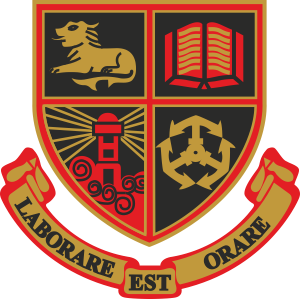The construction of a new museum in Lithuania to commemorate Jewish life lost in the Holocaust began last week, after a ceremony attended by Lithuania’s top officials – including the country’s prime minister, Speaker of Parliament and foreign minister, as well as senior diplomats and Jewish leaders.
Designed by the same Finnish company which designed the award-winning POLIN Museum of the History of Polish Jews in Warsaw, the state-of-the-art museum, located in Šeduva – 175km north-west of Vilnius – will open in 2020.
The museum complex will include a sprawling Jewish cemetery, which was completely restored and opened in 2015, monuments at three separate sites of Holocaust mass executions and burials, and a symbolic sculpture in the middle of the town.
“It will tell the story of the life of what was once the largest European Litvak Jewish population living in shtetls,” according to the museum’s website. “Lifestyle, customs, religion and the social, professional and family life of the Jews of Šeduva will serve as the centrepiece of the museum exhibition.
“Museum visitors will be taught the tragedy of Šeduva’s Jewish history, which ended in three pits near the shtetl in the early days of World War II, concluding five centuries of the history of the Jews of Šeduva.”
Ex-South African educator Eli Rabinowitz, who now lives in Perth, attended the ceremony and spoke on behalf of the Litvak Diaspora, especially South African Jews. “Many Litvaks migrated to South Africa, aptly named the ‘goldene medina’,” he said. “Jewish life in the small South African country towns often mirrored that of the Litvak shtetl. We often heard stories from ‘der heim’, describing the rich Jewish cultural life throughout Lithuania, which had existed over many centuries.
“Those Litvaks who left Lithuania before the Holocaust were indeed lucky. More than 95% of the Lithuanian Jews were murdered in the Holocaust, a greater percentage than any other country,” said Rabinowitz.
“In the future, when we visit this museum, we will be able to access the past with a better understanding of history. We will view the collection of objects and artifacts, giving us insight into how our ancestors lived their cultural, religious, work and home lives. We will learn about their values from their daily lives and from the items they kept and used.
“The museum will showcase the richness and the importance of Litvak shtetl life of years gone by. It will also reflect on the Jewish world that was destroyed by the Holocaust.
“The museum will educate Lithuanians and visitors to Lithuania, and so provide an opportunity to learn from our history and strive for a better world.”
Rabinowitz said he thinks the museum is being built now – before, as politicians and historians have realised, this past is lost to history.
He emphasises that the location is important, as “our Litvak heritage stems from the shtetls in this geographical region in Lithuania – not the bigger cities of Vilnius or Kaunas”.
Lithuania’s President Dalia Grybauskaitė said the laying of the cornerstone “heralds the reconstruction of an important part of Lithuanian history, closely interlinked with the history of Lithuania’s large Jewish community and its tragic fate”.
She added: “The Lost Shtetl Museum will bring back from oblivion the names and faces of many families, friends and neighbours, as well as their customs and traditions.”
Said Lithuania’s Foreign Minister Linas Linkevičius: “This unique museum will capture not only the memory of the Šeduva but also the Jewish communities of Lithuania as a whole.”

































